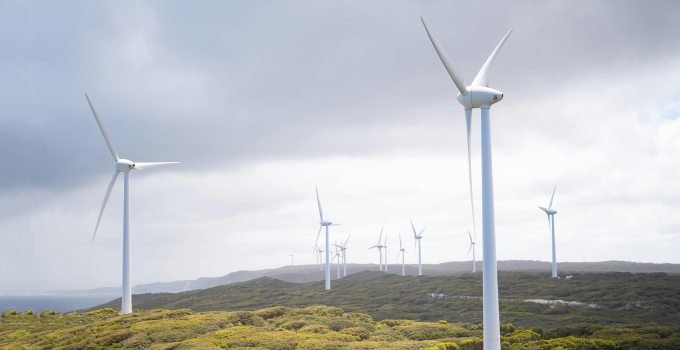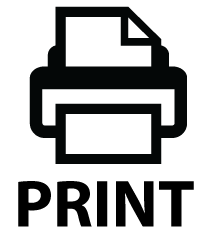THOUGHT LEADERSHIP
Unlocking repowering for Australia’s older wind farms
Europe and the US are already upgrading older wind farms with powerful new turbines. Repowering could potentially offer significant opportunities in Australia’s energy transition, but there are barriers. Australia risks falling behind unless action is taken now to make repowering easier, faster and more attractive for investors. Dr Andrew Wright, Bunfu Yu and Donald Vaughan explore the opportunities for intervention …

To accelerate the clean energy transition, repowering old wind farms should be a serious consideration. Many of Australia’s earliest wind farms are reaching the middle or end of their design lives. These projects were pioneering at the time, but today’s turbines are taller, more efficient and capable of generating far more electricity from the same site – which is likely to have some of Australia’s strongest and most consistent wind.
Repowering could potentially offer a faster, cheaper and less disruptive way to boost renewable generation than building entirely new projects. Yet, despite the clear potential, repowering is still rare in Australia.
The pending closure of Pacific Blue’s Codrington Wind Farm in Victoria announced in February 2025 is an interesting case study, demonstrating potential barriers. Pacific Blue has concluded that a project with new wind turbines at Codrington is not financially viable once the existing turbines reach the end of their useful life. Consisting of 14 x 1.3 MW wind turbines and completed in June 2001, Codrington is one of the earliest wind farms completed in Australia. The site no doubt has a great wind resource, but its small size and the limited capacity of the 66 kV grid connection do not suit modern wind turbines, which are typically at least 4 times the size and capacity.
Codrington is the largest old wind farm to announce its decommissioning in Australia. But other large early projects of similar age are also facing decisions about repowering or decommissioning.
This raises a question: are government and regulatory authorities properly prepared for an influx of ‘new old’ projects?
There is an expectation that larger wind farms will repower with new wind turbines, using and perhaps augmenting existing grid connections, under new development permits. But this concept is yet to be tested and proven in Australia.
How should governments and regulatory authorities in Australia deal with the planning approval aspects of repowering wind farms? Presently, they are considered like any other new development – but other countries have shown that repowering can be unlocked with practical mechanisms to incentivise developers, streamline planning and ease grid connection hurdles.
Incentivising repowering
Repowering requires significant capital investment – so a targeted financial incentive could make a meaningful difference in getting the project to stack up.
In Europe, there is a growing view that governments are not doing enough to drive forward the repowering of older wind farms that might otherwise carry on operating with inefficient use of land and resources. Local communities are typically comfortable living in the vicinity of wind farms that have been operating for a long period, so there is a strong argument that governments should develop specific policies to encourage repowering of old sites that already have community acceptance.
Germany led the way in direct policy intervention with a ‘repowering bonus’ included in 2009 in its Renewable Energy Sources Act, rewarding wind farm owners with a EUR 0.5 cent/kWh feed-in tariff bonus for replacing older wind turbines with modern, higher-capacity machines. This policy delivered more energy from fewer turbines while reducing land-use impacts. Repowering has subsequently become a significant contributor to Germany’s wind energy growth, with 1.1 GW of new wind capacity in 2023 coming from repowering.
In the USA, the Production Tax Credit (PTC) is now phasing out. This is an example of a policy that encouraged repowering as an unintended consequence. Enacted in 1992, it provided businesses with a tax credit per MWh of electricity generation for the first 10 years of a wind farm’s life. This created an incentive to generate as much output as possible for 10 years, and then build a new project to renew the tax credit. Given that 10 years is too short a lifetime for a well-engineered and well-run wind farm, this is not an ideal example of incentivising repowering.
Australia has no equivalent incentive for repowering. Early wind farms like Challicum Hills in Victoria, Starfish Hill in South Australia, and Tasmania’s Woolnorth wind farms are now approaching the end of their operating lives. Direct financial incentives or market mechanisms rewarding greater efficiency, reliability and grid services provided by repowered assets could make the difference between decommissioning these assets or repowering with new wind turbines to deliver decades more renewable energy.
Navigating approvals
In most cases, repowering will require additional planning and environmental approvals. This depends on the scale of the changes: are the turbines taller? are there new civil works? is the layout shifting? what new accesses or grid connection corridors might be required? The success of repowering depends on navigating approvals with the same care and thoroughness as for new projects.
Policy positions and guidelines have evolved over the last 2 decades, and there are now more stringent guidelines dictating the matters for consideration during approvals. Additional threatened or endangered species may also have been listed over the years.
Community engagement is a critical part of repowering and should not be overlooked. Even where communities have co-existed with a wind farm for decades, taller turbines or different layouts could raise new concerns about landscape impacts or amenity. Early dialogue and transparent benefit-sharing will help build trust and engagement in the project.
Clear planning, targeted environmental studies, and early engagement with regulators and communities can help projects capture the benefits of modern technology while minimising risks of delay.
A dedicated fast-track pathway for repowering would help these projects progress. Such a pathway could recognise prior approvals, with updates only where impacts materially change (e.g. taller turbine heights, new technology, and the cumulative effects of other developments), or where environmental values have changed. This doesn’t mean bypassing safeguards or consultation, but it does mean matching the level of scrutiny to the level of risk.
Easing grid connection challenges
Connecting a repowered project to the grid inevitably involves meeting stricter requirements than the original project, which will take time and add cost. Yet there is a strong argument that repowered projects should have some special considerations, given the differences between a greenfield development plugging into an existing network, and a replacement of an existing project with newer technology.
Proponents are faced with three paths: a new connection to the current rules, a grandfathered connection under the previous rules, or a hybrid approach. All of these have benefits and drawbacks. The best path will depend on the like-for-likeness of the repowering in terms of size, turbine technology and the amount of reused equipment (transformers and other electrical balance of plant).
Another consideration is whether the non-scheduled status of early wind farms can be preserved through this process. It is likely that significant changes to power or energy output may trigger a change. As a minimum, model accuracy requirements will apply to a new connection – which may lead to more detailed testing than the plant had previously been subjected to.
Options to help alleviate these challenges could include tailored connection pathways that recognise existing infrastructure, de-coupling from grid queue management for repowering projects, and clear technical standards so developers know what to expect.
As well as accelerating repowering, this could help make better use of grid assets, reducing pressure for new transmission.
What now for repowering?
Jurisdictions in Europe and the USA demonstrate that repowering works when governments set the right conditions. Early Australian projects such as Codrington, Starfish Hill, Challicum Hills and Woolnorth wind farms show that the time to decide is already here.
Given the challenges to achieve timely and cost-effective repowering in Australia, should we leave the low-hanging fruit of legacy sites dormant for now, and keep deploying capital on scale-efficient large sites in the short term?
Prioritising efficient large sites makes sense for urgent growth, but there are ways to pursue both greenfield and repowering – and the advantages of repowering remain. The early wind farms were built in some of the windiest, most accessible locations in Australia. Leaving these sites dormant would waste high-quality wind assets where there may already be community goodwill and existing grid assets.
Now is the time to consider whether particular site design approaches could make a site more easily repowerable in future – such as the way reticulation is installed, different approaches to foundations, scalable switchrooms and yard layouts. Is there a niche for wind turbine OEMs to offer lower power variants of new designs to better suit the scale of repower sites? Creativity and innovation will be needed – because the transition is too big and too urgent for us to leave repowering in the ‘too hard’ basket.
By pursuing both new developments and repowering simultaneously, Australia could capture immediate growth from large-scale projects while also making efficient use of our best wind resources and existing assets, maintaining community benefits and regional employment, and avoiding a wave of retired or stranded capacity.
If you are considering your wind farm’s future options and opportunities, please contact Andrew Wright or Patrick Pease.
ABOUT THE AUTHORS
Dr Andrew Wright is Entura’s Senior Principal, Renewables and Energy Storage. He has more than 20 years of experience in the renewable energy sector spanning resource assessment, site identification, equipment selection (wind and solar), development of technical documentation and contractual agreements, operational assessments and Owner’s/Lender’s Engineer services. Andrew has worked closely with Entura’s key clients and wind farm operators on operational projects, including analysing wind turbine performance data to identify reasons for wind farm underperformance and for estimates of long-term energy output. He has an in-depth understanding of the energy industry in Australia, while his international consulting experience includes New Zealand, China, India, Bhutan, Sri Lanka, the Philippines and Micronesia.
Bunfu Yu is a dynamic young leader in renewable energy planning, approvals, and business development. Bunfu played a pivotal role in Entura’s Environment and Planning Team’s success in achieving the Planning Institute of Australia’s National Award for Stakeholder Engagement in 2024. In 2023, Bunfu was named the National Young Planner of the Year by the Planning Institute of Australia. This honour recognised not only her passion for the planning and delivery of renewable infrastructure but also her active contribution to the profession through mentoring, public engagement, and knowledge sharing. She is currently a Senior Environmental Planner and a Business Development Manager at Entura.
Donald Vaughan has over 20 years’ experience providing advice on regulatory and technical requirements for generators, substations and transmission systems. He has worked for all areas of the electrical industry, including generators, equipment suppliers, customers, NSPs and market operators. Donald specialises in the performance of power systems. His experience in generating units, governors and excitation systems provides a helpful perspective on how the physical electrical network behaves.
25 September, 2025






